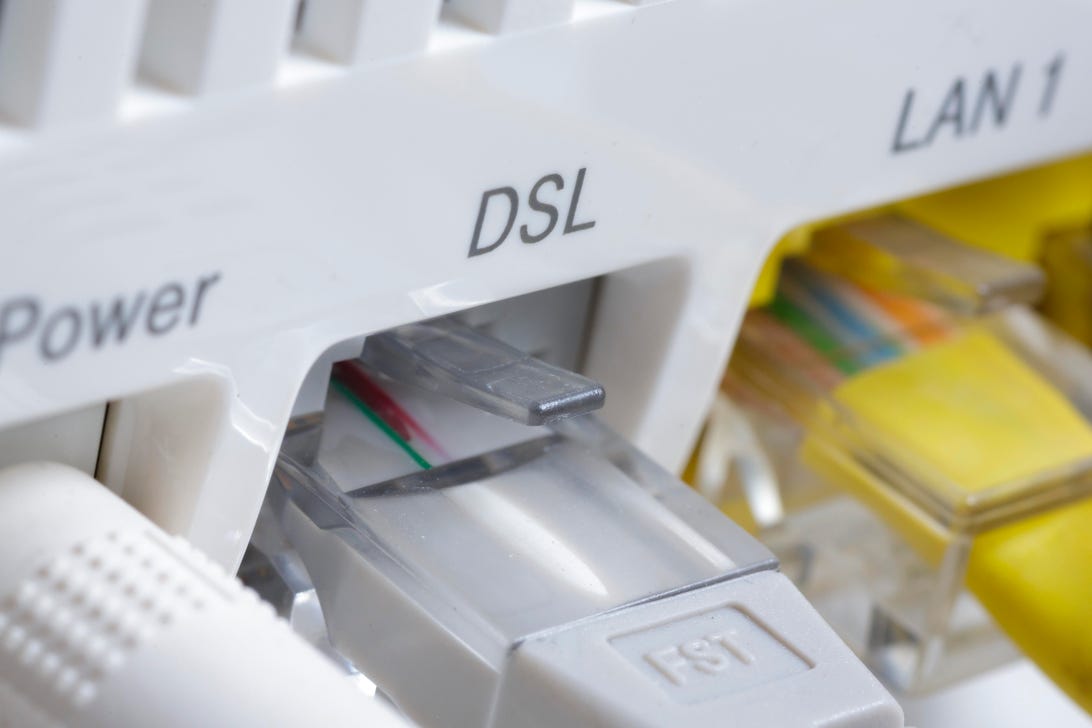Jan 8 2018 Verizon Dsl Only Getting .24 Mbps Upload

Talk most unfair. Millions of broadband customers in rural and underserved urban markets are paying nearly identical prices for slower DSL service as customers who have access to high-speed fiber services.
That's the decision from a written report published this calendar week by the National Digital Inclusion Alliance (NDIA), which advocates for more equitable broadband deployment.
In places where AT&T and Verizon don't offer their high-speed fiber-based broadband, they continue to sell customers slower-speed DSL service. But recently, the companies have been eliminating lower-tier plans, which has resulted in higher prices for the base of operations price of service. Only in areas where the networks haven't been upgraded, like rural regions of the country or low-income urban markets, this ways customers are paying more for slower service.
Take AT&T equally an case. The visitor is charging $sixty a month for DSL with speeds ranging between 6 and 10Mbps, co-ordinate to the white paper. This is the same toll, after the first twelvemonth discounts end, that AT&T charges its U-verse broadband customers, who go download speeds between 50Mbps and 75Mbps.
Verizon's pricing is similar. It charges $65 a month for 100Mbps Fios service, and most $63 a calendar month for DSL service, which tops out at between 1.5Mbps and 15Mbps.
NDIA argues that AT&T and Verizon have been eliminating their cheaper rate tiers and leaving the midrange price indicate. Merely they oasis't upgraded the DSL networks and have left the speeds of those services low.
"Each company now charges substantially identical monthly prices -- $63-$65 a month after offset-twelvemonth discounts accept concluded -- for home wireline broadband connections at nigh any speed upwardly to 100/100 Mbps fiber service," the white paper said.
Telecoms: 'Nosotros aren't ignoring rural America'
AT&T said in a argument that the results of this study are misleading.
"Attempting to assess net service offerings by only looking at standard rates does non give a complete picture; the internet service market is more competitive than e'er and most customers make their purchases at bundled and discounted rates," the company said in a argument.
The visitor says it hasn't eliminated speed tiers but instead has "simplified" its pricing with an "entry level toll point that's remained relatively abiding while the speed offered has increased."
It also notes that DSL is generally more expensive to maintain. And considering this service is typically offered in areas where there isn't enough population density to justify the cost of a cobweb-based service, in that location are fewer customers, which increases the cost per client.
A Verizon spokesman agreed.
"In terms of pricing, rural areas are challenging in that there's higher costs involved in providing and maintaining DSL and it isn't always viable to build fiber to the abode," said Raymond McConville, a Verizon spokesman. "Our products are priced competitively in all of our markets."
Verizon too disagrees with the assertion that the company is not investing in DSL upgrades in rural markets. In Jan, it appear it would deploy fiber to over 15,000 homes in rural upstate New York. Last calendar week, New York state announced Verizon would deploy cobweb to another l,000 homes. Verizon has also brought its Fios fiber service to several new towns in southern New Bailiwick of jersey, including some areas that had limited or no broadband admission, McConville added.
"In the areas where we haven't brought fiber, we continue investing to maintain and meliorate the performance of the DSL network," he said. "It wasn't that long ago that speeds topped out at only a few Mbps -- now we reach 15 Mbps in some areas thanks to our investment in the network."
New technologies like 5G wireless could also be game-changing for delivering high-speed broadband to rural areas where deploying cobweb is non viable, he added.
The trouble persists
Nevertheless, the study comes as policy makers take a closer look at broadband access and the digital split up that exists betwixt urban and suburban markets and rural America. Nigh 24 one thousand thousand Americans do not accept access to broadband with download speeds of at least 25 Mbps and uploads of 3 Mbps, according to the Federal Communications Commission.
A big majority of these unconnected or underconnected Americans live in rural areas where information technology's expensive to build infrastructure and deliver service. The situation likewise happens to be in parts of the land where in that location'due south picayune if any competition. And that seems to be a ameliorate predictor of whether the networks have been upgraded to higher speeds.
A report published earlier this week past the Plant for Local Cocky-Reliance, a public interest nonprofit, shows that big cablevision and telecommunications companies have invested most heavily in network upgrades in areas where they face competition. Meanwhile, in markets where no competition exists, network speeds lag.
"Efforts to increase investment from the largest firms in more than rural areas take largely failed," the report said. "Though states have varied regulations, the same trend results in every state -- investment past the large ISPs is correlated to competition rather than the regulatory environment."
Hither's what Verizon's 5G field test looks like (pictures)
Run across all photosFirst published Aug. 2, 3:44 p.m. PT.
Update, Aug. iii at eight:32 a.yard.: Adds comments and information from Verizon.
Security: Stay up-to-date on the latest in breaches, hacks, fixes and all those cybersecurity problems that keep you lot up at night.
Net neutrality is actually, officially expressionless: There are no more procedural delays on the FCC'due south decision -- the rules have been rolled back. Here's everything you need to know.
Source: https://www.cnet.com/news/are-at-t-and-verizon-fleecing-rural-america/
0 Response to "Jan 8 2018 Verizon Dsl Only Getting .24 Mbps Upload"
Post a Comment